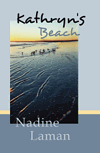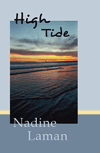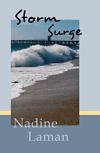The beginning is the introduction of the main character, the protagonist, a few friends, and the antagonist along with the setting (time and place). It needs to hook the reader with the first line and hold them long enough for the reader to care what happens to the protagonist so they will read to the end.
Of course, something does
happen to the protagonist and the bulk of the story is spent resolving the
conflict. In life we spend a great deal of effort to return things to the way
they were when we were comfortable, happy, and safe – or to improve our
situation to be comfortable, happy, and safe. Sometimes our hero sets out to
improve someone else’s situation, or even the state of a group of people.
On this journey, real or figurative, there are setbacks, failures, obstacles, and the occasional gain. There are also those who help and those who don’t. The protagonist is pursued by a person or situation (maybe a natural disaster or a pending manmade disaster) or they are running to something (maybe a race against time, which can be a fixed, unyielding foe).
On this journey, real or figurative, there are setbacks, failures, obstacles, and the occasional gain. There are also those who help and those who don’t. The protagonist is pursued by a person or situation (maybe a natural disaster or a pending manmade disaster) or they are running to something (maybe a race against time, which can be a fixed, unyielding foe).
To be interesting, the
middle doesn’t go in a straight simple line. An experienced writer uses
literary devices to move the story forward, and the middle is where this is
most evident. Most people do fairly well
with the middle. They get on a roll and the story "nearly writes itself" as they type.
The end seems to be the
difficult piece for people to write. Once the writer figures out the
ending, they rush to it and through it.
Most of the minor conflicts are resolved during the middle. The end is the final resolution of the primary conflict. However, it is not the place to add new characters or new information. Think of Apollo 13, the conflict can only be solved with the materials already onboard.
Most of the minor conflicts are resolved during the middle. The end is the final resolution of the primary conflict. However, it is not the place to add new characters or new information. Think of Apollo 13, the conflict can only be solved with the materials already onboard.
Keep the reader in mind while writing.
Think about what will be a satisfying ending to a stranger who has spent time
reading to the endpoint. It cannot disappoint in the end.
To learn more about
literary devices, check this site: http://literary-devices.com

 When Paul Fenton stops for breakfast in a small town, he gets more than he bargained for in the process.
When Paul Fenton stops for breakfast in a small town, he gets more than he bargained for in the process.
 When two-hundred-year-old human remains are discovered on one of Neptune's moons, Earth's history falls into question.
When two-hundred-year-old human remains are discovered on one of Neptune's moons, Earth's history falls into question.
 Emily's husband persuades her to try thalidomide to ease her symptoms as she is unaware of the devastating effects.
Emily's husband persuades her to try thalidomide to ease her symptoms as she is unaware of the devastating effects.
 Who is the women's shelter bomber? Melissa Ryan suspects that her husband knows.
Who is the women's shelter bomber? Melissa Ryan suspects that her husband knows.
 Further developments with the Wilder family.
Further developments with the Wilder family.
 A hidden past shakes the O'Donovan family to its core
A hidden past shakes the O'Donovan family to its core
 A swirl of emotion and choice, set in Cape Town, South Africa
A swirl of emotion and choice, set in Cape Town, South Africa
 Love is a constant, but it comes at a price.
Love is a constant, but it comes at a price.
 When the road ahead is unclear, sometimes you have to rely on trust.
When the road ahead is unclear, sometimes you have to rely on trust.
 The struggle between good and evil is ages old. It gets all the more complicated when the good guys aren't all good and the bad guys have redeeming qualities.
The struggle between good and evil is ages old. It gets all the more complicated when the good guys aren't all good and the bad guys have redeeming qualities.
 Story of a land mothering two races of people – the light-skinned and the dark-skinned.
Story of a land mothering two races of people – the light-skinned and the dark-skinned.
 A gifted Ukrainian ballerina comes into possession of a mysteriously coded address book.
A gifted Ukrainian ballerina comes into possession of a mysteriously coded address book.
 Six passengers' lives change for better or worse after they arrive in Honiton.
Six passengers' lives change for better or worse after they arrive in Honiton.
 Resilience and love in a harsh and unforgiving age
Resilience and love in a harsh and unforgiving age
 Kathryn's Beach
Kathryn's Beach High Tide
High Tide Storm Surge
Storm Surge
No comments:
Post a Comment